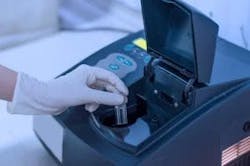Illuminating Biophotonics: The Synergy of Optics and Biological Systems
The field of Biophotonics serves as a bridge between biology and optics, exploring how light interacts with biological systems. This interdisciplinary domain facilitates the analysis, detection, and manipulation of biological information through various light-based technologies. This article delves into the significance of biophotonics, the role of optical products, advantages of customization, and emerging challenges and opportunities in the field.
Biophotonics is witnessing rapid growth, driven by extensive research and applications in biology and medicine. Its applications span biological imaging, biosensing, spectroscopy, and phototherapy, contributing significantly to early disease detection, drug development, and neuroscience research.
The Crucial Role of Optical Products
Optical products play a crucial role in the field of biophotonics, serving various essential functions:
- Fiber Optics: Fiber optics technology enables precise control over the propagation of light. In biophotonics, optical fibers are utilized to deliver light into tissues or achieve efficient light transmission within living organisms, ensuring accurate and controlled illumination.
- Imaging Systems: Optical and fluorescence microscopes are indispensable tools for biological imaging in biophotonics. They facilitate the visualization and observation of cellular and tissue structures and functions with high precision.
- Spectrometers: Spectrometers are instrumental in analyzing the wavelength and intensity of light. Within biophotonics, they are employed to measure and analyze fluorescence and absorption spectra from biological samples, providing valuable insights into their composition and properties. Lasers: Lasers are widely utilized in biophotonics for their ability to emit light with specific wavelengths and intensities. They are essential for therapeutic and experimental applications such as tissue ablation, coagulation, and precise cell manipulation.
Benefits of Customization in Imaging Systems and Lasers
Customized imaging systems and lasers offer tailored solutions optimized for specific applications, enhancing performance, flexibility, and cost-efficiency. They enable precise control over parameters such as resolution, wavelength, and power, facilitating more effective research and experimentation in biophotonics.
Shanghai Optics stands as a leading provider of optical solutions in biophotonics, offering innovative products tailored to researchers’ and clinicians’ needs. Our advanced optical solutions empower precise biological imaging and experimentation, contributing to advancements in medical diagnostics and treatments.
Grand Challenges and Opportunities in Biophotonics
Despite remarkable achievements, biophotonics faces challenges such as limited optical penetration depth and the need for improved molecular sensing techniques. Opportunities lie in the development of compact devices, integration with molecular profiling, and leveraging artificial intelligence for data analysis. Collaboration among scientists from diverse fields and governmental support are essential for addressing these challenges and realizing the full potential of biophotonics in healthcare and environmental monitoring.
Biophotonics continues to evolve, offering promising avenues for research and application in various fields. By harnessing the synergy between optics and biological systems, biophotonics paves the way for transformative advancements in medicine, biology, and beyond.
Do not hesitate to contact Shanghai Optics today. We’d be more than happy to discuss your projects and how best they can become a success.

